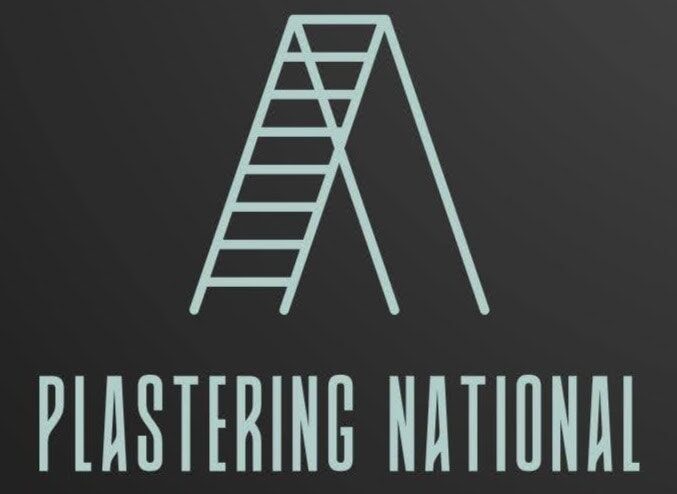When constructing or renovating your home or office, choosing the right plasterboard (also known as drywall or gyprock) is essential for ensuring your walls and ceilings perform at their best.
With various plasterboard types available, it’s important to understand their specific characteristics and benefits to ensure your project meets the highest standards.
This guide will discuss the most common types of plasterboard for interior walls, covering their unique features, uses, and advantages.
Let’s Get Straight to the Point
Choosing the right plasterboard is crucial for both construction and renovation projects. Various types of plasterboard offer distinct advantages, such as standard plasterboard for general use, moisture-resistant boards for damp areas like bathrooms, and fire-resistant boards for safety in high-risk zones.
Acoustic plasterboard enhances soundproofing, while impact-resistant boards are ideal for high-traffic areas. Thermal plasterboard improves energy efficiency, and lightweight plasterboard simplifies installation.
Some boards combine features like moisture and fire resistance to provide dual protection. Understanding the specific benefits of each type ensures the best performance, durability, and safety for your interior walls.
Standard Plasterboard
What It Is:
Standard plasterboard, often called regular or whiteboard, is the most common type for general internal applications. It is typically used for walls and ceilings in residential and commercial properties.
Key Features:
- Smooth Surface: The board’s smooth surface makes it easy to decorate, paint, or apply wallpaper.
- Cost-Effective: Standard plasterboard is one of the most affordable options, making it a go-to for budget-conscious projects.
- Easy to Install: It’s lightweight and easy to handle, which reduces installation time and labour costs.
Best For:
- Living Rooms, Bedrooms, and Hallways: Standard plasterboard is perfect for most home living spaces.
- Offices and Commercial Spaces: It is also commonly used in low-traffic areas of commercial properties.
Why It Matters:
Standard plasterboard is a cost-effective solution for general purposes, providing a reliable finish for most interior applications. Its versatility and affordability make it a practical choice for various building projects.

Moisture-Resistant Plasterboard
What It Is:
Moisture-resistant plasterboard, often known as “green board,” is specially treated to withstand high humidity levels, making it ideal for use in damp environments such as bathrooms, kitchens, and laundry rooms.
Key Features:
- Moisture Protection: The board is treated with special additives that prevent moisture absorption, helping to protect the structure from water damage.
- Mould and Mildew Resistance: The green coating on the board resists mould and mildew growth, making it an ideal choice for wet areas.
- Enhanced Durability: Unlike standard plasterboard, moisture-resistant boards have a stronger and denser core.
Best For:
- Bathrooms and Kitchens: These areas are exposed to high moisture levels, so using moisture-resistant plasterboard can prevent structural issues like mould growth.
- Wet Rooms and Laundry Areas: Ideal for areas where water splashing or humidity is a concern.
Why It Matters:
Using moisture-resistant plasterboard in high-humidity areas ensures that your walls and ceilings remain in good condition over time, preventing water damage and the development of harmful mould.
Fire-Resistant Plasterboard
What It Is:
Fire-resistant plasterboard, sometimes known as fire-rated plasterboard or “fire board,” is treated with special fire-resistant compounds to provide higher protection in fire-rated areas.
Key Features:
- Fire Protection: Fire-resistant plasterboard can withstand high temperatures and prevent the spread of fire, offering extended protection.
- Ideal for Fire-Rated Areas: It’s used in areas that must comply with building safety regulations.
- Extended Fire Resistance: Depending on the board’s specification, the plasterboard can provide fire resistance for up to 60 minutes or more.
Best For:
- Commercial Kitchens: These areas often need to meet strict fire safety standards.
- Fire Escape Routes and Stairwells: Plasterboards used in fire-rated zones must meet specific regulations to ensure safe evacuation during emergencies.
Why It Matters:
Fire-resistant plasterboard is critical for meeting building regulations and ensuring that the interior of your property is protected in case of a fire. It plays a vital role in slowing the spread of fire, potentially saving lives and reducing property damage.
Acoustic Plasterboard
What It Is:
Acoustic plasterboard is designed to reduce sound transmission between rooms, making it the perfect soundproofing solution. This type of plasterboard is often used in areas where noise control is essential.
Key Features:
- Soundproofing: Acoustic plasterboard has a denser core, which helps absorb sound and reduce noise transfer between rooms.
- Improved Privacy: It provides excellent sound insulation, which is ideal for creating private, noise-free spaces.
- Energy Efficiency: The denser construction can also contribute to better thermal insulation.
Best For:
- Offices and Conference Rooms: Ideal for environments where confidentiality or privacy is crucial.
- Home Theatres and Music Studios: Perfect for reducing noise and improving acoustics.
- Apartments and Multi-Unit Buildings: Helps to minimise noise transfer between units.
Why It Matters:
Acoustic plasterboard is essential for creating quiet, private spaces in homes and businesses. Whether you’re building a music studio, office, or home cinema, this plasterboard helps to control sound levels and improve acoustic comfort.
Impact-Resistant Plasterboard
What It Is:
Impact-resistant plasterboard, or “tough board,” is designed to withstand physical impacts and heavy wear, making it suitable for high-traffic areas.
Key Features:
- Durable and Strong: Impact-resistant plasterboard has a thicker, denser core that provides extra strength.
- Resistant to Damage: It can withstand impacts from knocks, dents, and abrasions, making it ideal for areas with high traffic or activity.
- Suitable for High-Traffic Areas: It is commonly used in commercial spaces, schools, and hospitals.
Best For:
- Hallways and Corridors: Areas that receive frequent foot traffic.
- Public Spaces: Ideal for locations like schools, hospitals, and offices that require long-lasting materials.
Why It Matters:
In high-traffic areas where walls and ceilings are subject to frequent impacts, impact-resistant plasterboard helps maintain the integrity of your building’s structure while reducing the need for frequent repairs.
Thermal Plasterboard
What It Is:
Thermal plasterboard incorporates thermal insulation properties to help regulate temperature and improve energy efficiency. This type of plasterboard is perfect for homes or buildings that require better thermal performance.
Key Features:
- Thermal Insulation: Thermal plasterboard has an added insulation layer that helps maintain consistent indoor temperatures.
- Energy Efficiency: Improving heat retention helps reduce heating and cooling costs, making it a great option for energy-conscious homeowners.
- Improved Comfort: It keeps rooms warmer in the winter and cooler in the summer.
Best For:
- Homes and Offices: Ideal for buildings where energy efficiency is a priority.
- Energy-Efficient Buildings: Perfect for homes that aim to meet green building standards.
Why It Matters:
Thermal plasterboard enhances a building’s energy efficiency, contributing to long-term savings on heating and cooling costs while improving indoor comfort.
Lightweight Plasterboard

What It Is:
Lightweight plasterboard is designed to be lighter than standard plasterboard, making it easier to handle and install. Despite its reduced weight, it offers similar durability and strength.
Key Features:
- Easier to Handle: The reduced weight makes it easier to lift, carry, and install, reducing both labour time and installation costs.
- Cost-Effective: It’s often cheaper to install than traditional plasterboard due to reduced labour costs.
- Same Durability: Despite being lighter, it provides similar durability to standard plasterboard.
Best For:
- Large Residential Projects: Perfect for homes or buildings that require quick installation and minimal disruption.
- Commercial Construction: Ideal for projects that require quick turnaround times.
Why It Matters:
Lightweight plasterboard is an excellent choice for projects that require fast installation and reduced installation costs. It’s ideal for large-scale projects where time and efficiency are key factors.
Moisture & Fire-Resistant Plasterboard
What It Is:
This plasterboard combines moisture and fire resistance benefits, offering a dual-purpose solution for areas that require protection against water damage and fire hazards.
Key Features:
- Dual Resistance: Combines the advantages of moisture-resistant and fire-resistant boards.
- Ideal for Wet and Fire-Sensitive Areas: This is Perfect for kitchens, bathrooms, and wet rooms that must meet fire and moisture regulations.
Best For:
- Kitchens and Bathrooms: These areas are exposed to high humidity and fire hazards, making this plasterboard a great choice for optimal safety.
- Wet Rooms and Commercial Kitchens: Ideal for spaces that comply with fire safety and moisture protection standards.
Why It Matters:
Moisture—and fire-resistant plasterboard provides the ultimate protection for areas exposed to fire and water. It helps ensure the safety and longevity of your building while complying with regulations.
In conclusion, choosing the right plasterboard ensures your interior walls meet functional, aesthetic, and safety needs. Different types provide moisture, fire protection, soundproofing, and insulation. By understanding each type’s properties and your space’s needs, you can make an informed choice that enhances durability and comfort. Whether building or renovating, the right plasterboard ensures optimal performance for years.

